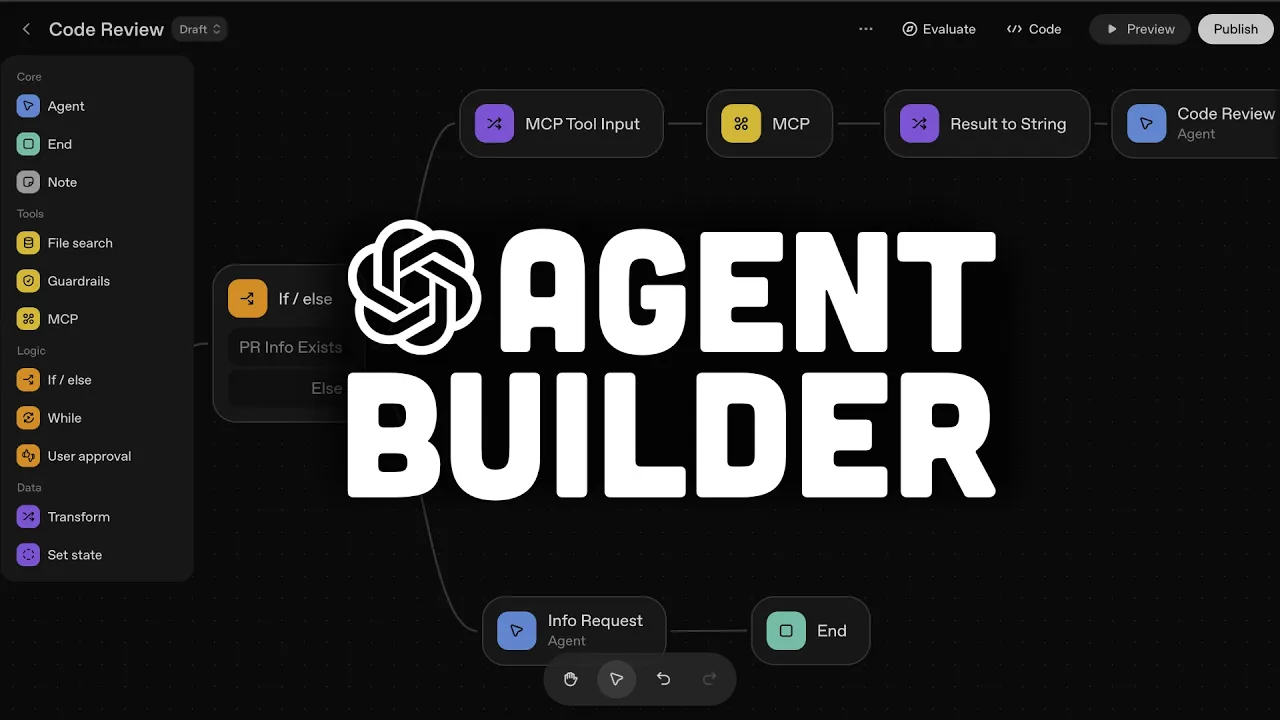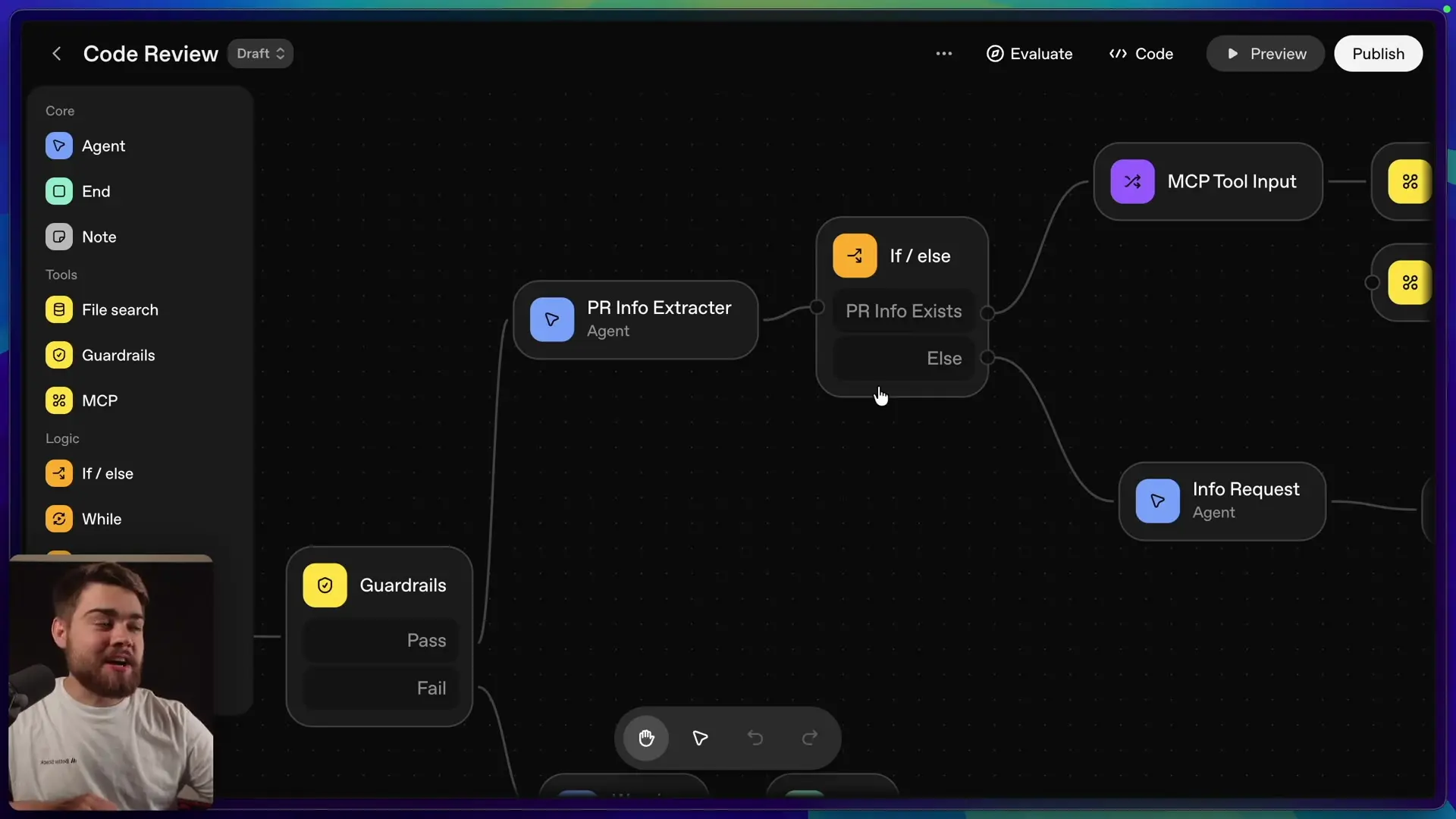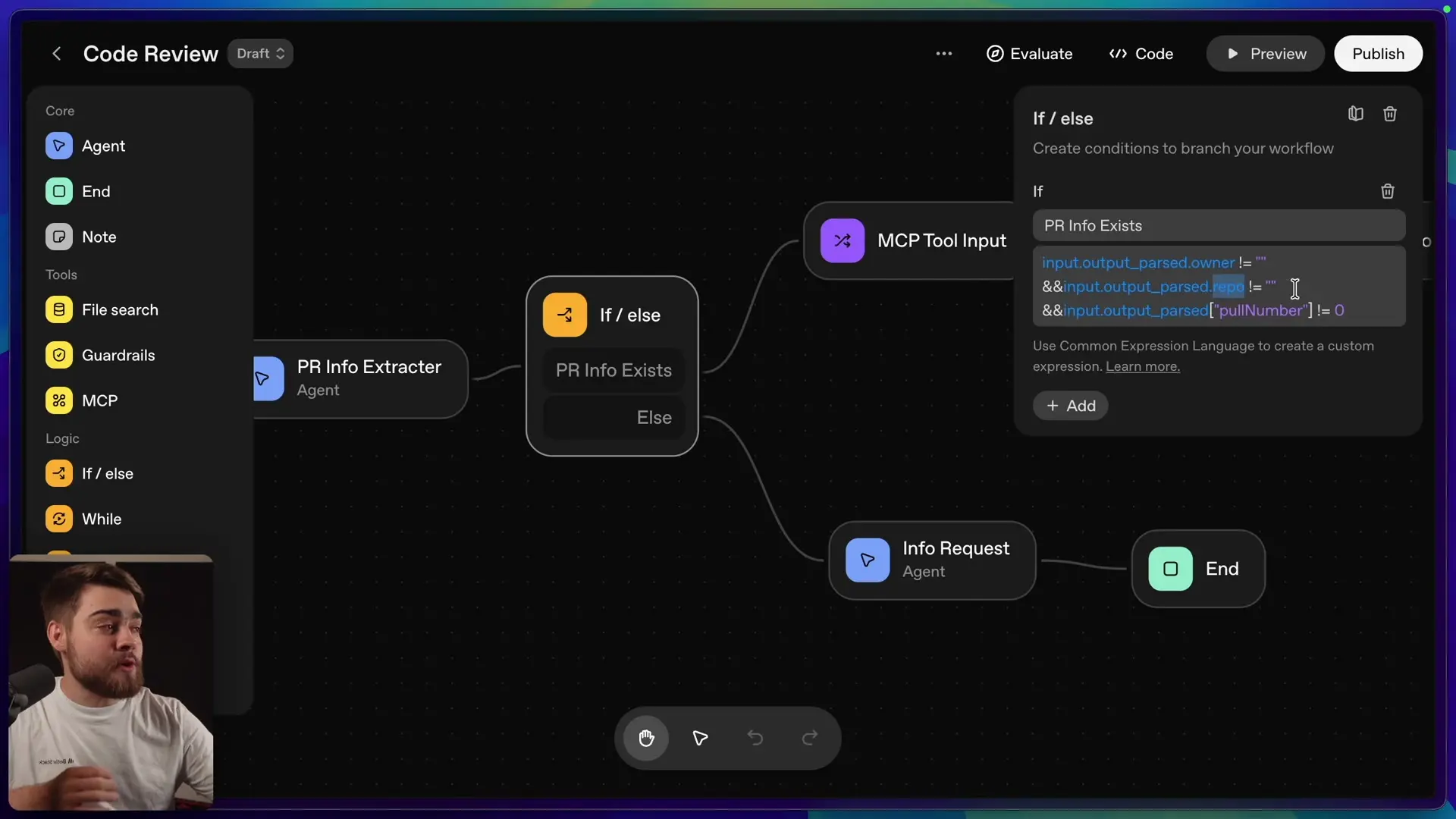
OpenAI has released a new Agent Builder platform that allows developers to create custom AI workflows with interactive components. This powerful new tool enables the creation of specialized agents for various tasks, from code reviews to data processing, with a visual drag-and-drop interface similar to automation platforms like n8n and Zapier.
Key Features of OpenAI's Agent Builder
The Agent Builder provides a comprehensive set of tools for creating complex AI workflows. With its intuitive interface, developers can connect various nodes to create a seamless process flow from input to output. Here are some of the standout features:
- Visual drag-and-drop interface for workflow creation
- Integration with OpenAI's models (including GPT-4.1 and GPT-5)
- Support for MCP servers including GitHub and third-party services
- Interactive widgets for enhanced user experiences
- Guardrails for content moderation, jailbreak prevention, and PII protection
- Structured output formatting in JSON
- Conditional logic with if-else nodes
- Data transformation capabilities
Building a GitHub PR Code Review Agent
To demonstrate the capabilities of the Agent Builder, let's examine how to create a GitHub Pull Request code review agent. This workflow takes a GitHub PR link as input and produces a comprehensive code review with an accompanying meme widget.
Workflow Structure
The workflow begins with a starting block that receives the user's input text (the GitHub PR link). From there, it flows through several key steps:
- Guardrail checks for content moderation and jailbreak prevention
- PR information extraction (repo name, owner, and pull request number)
- Conditional logic to verify the presence of required information
- Data transformation to prepare for the MCP server
- GitHub MCP server integration to fetch the pull request diff
- Code review generation using GPT with web search and file search capabilities
- Widget generation to display a relevant meme based on the code review

Guardrails for Safety and Security
One of the most impressive features is the Guardrails tool, which can perform multiple checks on both user inputs and model outputs. These include moderation checks for inappropriate content, hallucination detection, jailbreak prevention, and personal information protection. Each guardrail is highly customizable, allowing developers to set specific thresholds and choose which models perform the checks.
If content fails these checks, the workflow can be directed to an alternative path, such as sending a friendly warning message to the user instead of proceeding with the potentially problematic request.
Structured Data Handling
The Agent Builder excels at handling structured data. For the GitHub PR agent, we need to extract specific information from the user's input in a structured format:
{
"owner": "string",
"repo": "string",
"poolNumber": "number"
}This structured output can then be validated using conditional logic. The workflow checks if any of the required fields are empty or invalid:

MCP Server Integration
The MCP (Multi-Call Protocol) server integration is a powerful feature that allows the Agent Builder to connect with external services. For the GitHub PR agent, an MCP server is used to fetch the pull request diff directly from GitHub using the extracted repository information.
OpenAI provides several built-in MCP servers, including GitHub, and also supports third-party services like Zapier. Developers can also add custom MCP servers that support streamable HTTP, making the platform highly extensible.
Interactive Widgets: A Game-Changing Feature
Perhaps the most exciting feature of the Agent Builder is the ability to create interactive widgets that can be displayed in the chat interface. These widgets can range from simple displays to complex interactive components.

For the GitHub PR agent, a widget is used to display a relevant meme based on the code review. However, widgets can be used for much more sophisticated purposes, such as flight information displays, calendars, or e-commerce purchasing interfaces.
Creating widgets is made simple with the built-in widget builder, which allows developers to either code the widget manually or use AI to generate widgets based on natural language descriptions. OpenAI also provides a gallery of example widgets to help developers get started.
Code Review Agent Implementation
The core of our GitHub PR workflow is the code review agent. This agent receives the pull request diff from the MCP server and uses GPT to generate a comprehensive code review. To enhance its capabilities, the agent is connected to several tools:
- Web search for finding relevant documentation or best practices
- File search for accessing code best practices from a vector database
- MCP server access for additional context if needed
The agent is configured with a detailed prompt that instructs it on how to perform the code review, what aspects to focus on, and how to format its output. By using GPT-5, the agent can provide in-depth analysis of the code changes, including potential bugs, security issues, and suggestions for improvement.
Current Limitations and Issues
While the Agent Builder is powerful, it does have some limitations and issues in its current state:
- The "required" toggle in JSON schema definitions appears to be broken, forcing all fields to be required
- Some MCP servers, including the GitHub one, experience intermittent failures
- The platform is still new and may have other undiscovered bugs
- Limited documentation on advanced features and best practices
These issues are likely to be resolved as the platform matures, but they are worth considering for anyone planning to build production workflows with the Agent Builder in its current state.
Workflow Evaluation and Debugging
The Agent Builder includes tools for evaluating and debugging workflows. The Evaluate feature shows traces of previous runs, allowing developers to see exactly what happened at each step and identify any issues. This is invaluable for complex workflows with multiple conditional branches.
Additionally, the platform includes graders that can be used to evaluate the quality of the workflow's outputs based on custom criteria. This helps ensure that the agents are performing as expected and meeting the desired quality standards.
Comparison with Other Automation Platforms
While some have called the Agent Builder an "n8n killer," it's more accurate to view it as a complementary tool with a different focus. Unlike general automation platforms like n8n and Zapier, the Agent Builder is specifically designed for AI-powered workflows that leverage OpenAI's models.
The presence of Zapier as a supported MCP server suggests that OpenAI sees value in integration rather than competition with existing automation platforms. Each tool has its strengths, with the Agent Builder excelling at natural language processing and interactive AI experiences.
Conclusion
OpenAI's Agent Builder represents a significant step forward in making AI workflow creation accessible to developers. With its intuitive interface, powerful integration capabilities, and innovative features like interactive widgets, it opens up new possibilities for creating sophisticated AI-powered applications.
While there are some issues to be addressed in the current implementation, the platform shows tremendous promise for developers looking to build custom AI agents for specific use cases. As it matures and the ecosystem around it grows, we can expect to see increasingly sophisticated applications built on this foundation.
For developers working with OpenAI's technologies, the Agent Builder provides a valuable new tool for creating complex, interactive AI experiences without requiring deep expertise in prompt engineering or API integration. It's well worth exploring for anyone interested in building custom AI workflows.
Let's Watch!
OpenAI's New Agent Builder: A Powerful Tool for Custom AI Workflows
Ready to enhance your neural network?
Access our quantum knowledge cores and upgrade your programming abilities.
Initialize Training Sequence